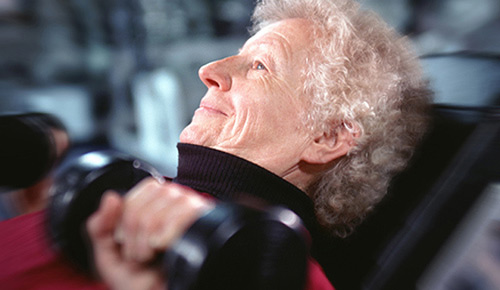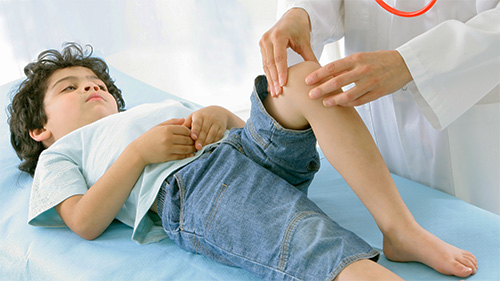Caroline White on the latest physio research.
An intensive lifestyle change programme combining vigorous exercise, calorie restriction, and education could cut the amount of routine medication needed in patients with type 2 diabetes and save health services money, suggests a small French study.

Study participants first attended a three-week residential course, comprising educational workshops on nutrition and sustainable lifestyle change; 15-20 hours a week of endurance and resistance exercises; and a daily 500 calorie reduction in energy intake.
They then continued this programme at home for a year, during which time changes in diabetes risk factors and routine medication use were regularly monitored.
Most (83 per cent) were taking drugs to lower blood pressure while two thirds were taking lipid lowering drugs. Three people weren’t taking drugs specifically for diabetes.
The ability to stick to the programme fell significantly over the course of the year. But 26 people completed it, by which point 14 (54 per cent) had stopped or reduced their medication and five (19 per cent) had increased it.
In all, 19 out of 140 medications were reduced or stopped. On average, these reductions amounted to almost 1.5 pills per person a day, with an estimated annual saving of around €110 (£97).
After 12 months, blood glucose had fallen by an average of 22 per cent, waist circumference by seven per cent, and central fat by 150 per cent.
Blood glucose and HbA1c (glycated haemoglobin) were the only factors associated with routine medication costs. Patients with an HbA1c above 6.5 per cent doubled their drug use during the 12-month monitoring period.
The researchers acknowledge the small size of the study and lack of a comparison group. But they conclude: ‘Taking into account the global pandemic of type 2 diabetes, lifestyle intervention would represent non-negligible fiscal savings.’
Lanhens C et al. Long term cost reduction of routine medications following a residential programme combining physical activity and nutrition in the treatment of type 2 diabetes: a prospective cohort study. BMJ Open 2017 bmjopen.bmj.com
Need to know
Updated National Institute for Health and Care Excellence (NICE) guidelines for the management of type 2 diabetes in adults explain that this chronic metabolic condition is commonly associated with obesity, physical inactivity, raised blood pressure, disturbed blood lipid levels and a tendency to develop thrombosis, and therefore is recognised to have an increased cardiovascular risk.
Implications
The guidelines highlight that diabetes care could account for up to 10 per cent of NHS costs.
The BMJ study found evidence of some clinically important changes in outcomes measured during and following the intervention. But the authors don’t elaborate on why those with an HbA1c level greater than 6.5 per cent in the last quartile doubled their routine medication costs. They also identify important potential barriers to implementing a similar lifestyle intervention – namely, costs and the drop-off in adherence.
The NICE guidelines outline the following key priorities for implementation: patient education; dietary advice; blood pressure and blood glucose control; and drug treatment. These priorities reinforce the need for lifestyle advice that includes increasing physical activity. The guidelines emphasise the importance of a tailored approach, and of giving particular consideration to the broader health and social care needs of older adults. More research into the effects of stopping and/or switching drug treatments to control blood glucose levels is needed, they say.
Resource
NICE 2017. Type 2 diabetes in adults: management www.nice.org.uk
CSP research adviser Katherine Jones
Children’s knee problems make up hefty caseload for GPs

Records on appointments for knee problems made throughout 2010 at 14 surgeries in North Staffordshire were extracted from a general practice consultation database (CiPCA). The consultations were coded into ‘symptom’ or ‘diagnosis’ and further categorised as ‘trauma’ and ‘non-trauma’. Patients were classified by age group, sex, and area of deprivation.
In 2010, a total of 5,081 consultations for musculoskeletal conditions were recorded for 2,836 children and teenagers between the ages of three and 19 years, equivalent to an annual consultation prevalence of 1,034 per 10,000 registered patients.
The number of consultations for knee pain increased up to the ages of 12 to 15 before levelling off.
Symptom codes such as ‘knee pain’ were used more often than diagnosis codes such as ‘knee sprain’. But symptom code use declined with increasing age. More symptom codes were used in girls than in boys, and more diagnosis codes were used in patients from areas of high deprivation.
‘Knee problems in children and adolescents represent a significant caseload for GPs and the propensity for these problems to persist presents a significant challenge for general practice,’ conclude the researchers.
Michaleff ZA et al. Consultation patterns of children and adolescents with knee pain in UK general practice: analysis of medical records. BMC Musculoskeletal Disorders 2017 bmcmusculoskelet disord.biomedcentral.com
Comments and conclusions
- Intensive endurance exercise may not harm cardiovascular health as much as thought. A study of 97 men who had each run at least 11 marathons showed that the only factor independently associated with stiffer arteries and impaired vessel function was age.
Pressler A et al. European Journal of Preventive Cardiology 2017 journals.sagepub.com - Chronic pain itself may not increase the risk of early death; its the impact on daily living, suggests a long term study of more than 17,000 British adults aged 50-plus.
Smith D et al. Arthritis Care & Research 2017 onlinelibrary.wiley.com - People whose partners responded more empathically to their daily feelings of pain had better physical function over time than those whose partners were less empathic, reveals an 18-month study of 145 middle-aged patients with knee osteoarthritis.
Wilson SJ et al. Psychological Science 2017 journals.sagepub.com
Author
Caroline White and Katherine JonesNumber of subscribers: 2
